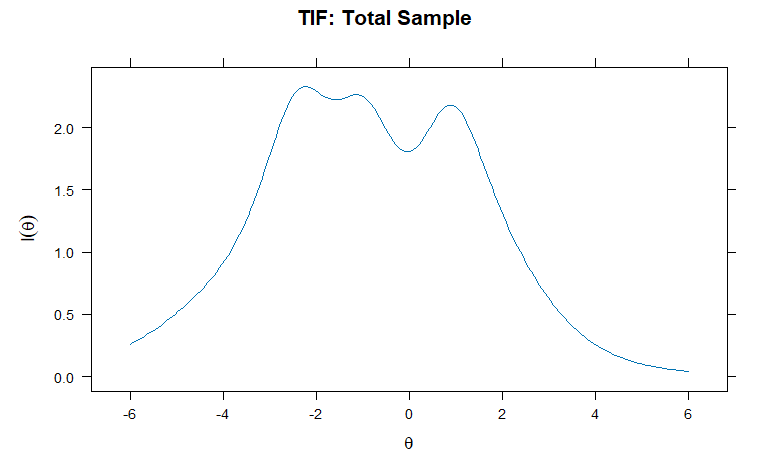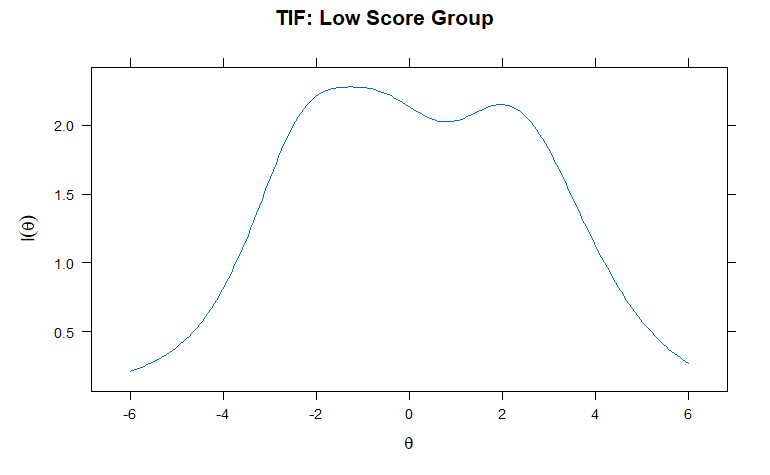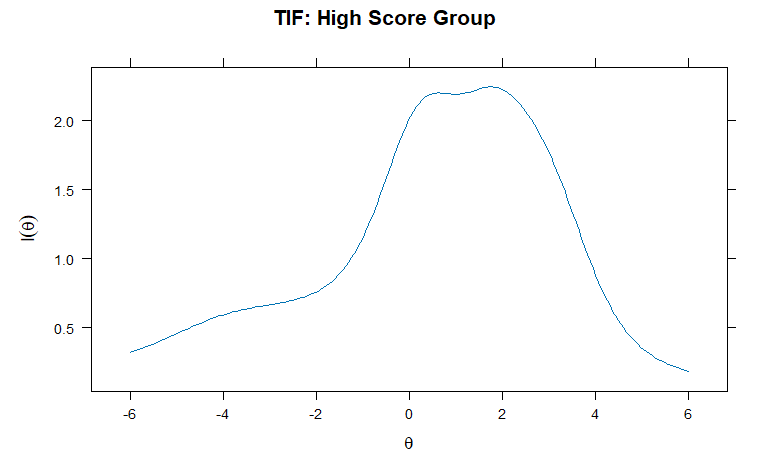mirt パッケージとデータの読み込み
library(mirt) data(Science)
データの構造
str(Science)
データ。
'data.frame': 392 obs. of 4 variables: $ Comfort: int 4 3 3 3 3 4 3 3 3 4 ... $ Work : int 4 3 2 2 4 4 2 2 3 3 ... $ Future : int 3 3 2 2 4 3 3 3 4 3 ... $ Benefit: int 2 3 3 3 1 3 4 4 2 3 ...
データ型の変更
Science_num <- as.data.frame( lapply(Science, function(x) as.numeric(x)) )
グループの作成
total_score <- rowSums(Science_num) # 中央値で二分 med <- median(total_score) group_low <- Science_num[ total_score <= med, ] # 低得点群 group_high <- Science_num[ total_score > med, ] # 高得点群
1因子 GRM モデルの推定
graded(段階反応モデル)を指定する
mod_total <- mirt(Science_num, 1, itemtype = "graded") mod_low <- mirt(group_low, 1, itemtype = "graded") mod_high <- mirt(group_high, 1, itemtype = "graded")
テスト情報関数の可視化
θ(潜在特性値)のテスト情報量をプロット
par(mfrow = c(3,1), mar = c(4,4,2,1)) plot(mod_total, type = "info", main = "TIF: Total Sample") plot(mod_low, type = "info", main = "TIF: Low Score Group") plot(mod_high, type = "info", main = "TIF: High Score Group")



ggplotを持つ板重ね書きプロット
# ライブラリ読み込み
library(ggplot2)
library(tidyr)
# θ のグリッドを作成
Theta <- matrix(seq(-4, 4, length = 201))
# 各モデルのテスト情報量を取得
info_total <- testinfo(mod_total, Theta)
info_low <- testinfo(mod_low, Theta)
info_high <- testinfo(mod_high, Theta)
# データフレームにまとめる
df <- data.frame(
theta = Theta[,1],
Total = info_total,
Low = info_low,
High = info_high
)
# 縦長フォーマットに変換
df_long <- pivot_longer(df, cols = -theta,
names_to = "Group",
values_to = "Information")
# ggplot2 で重ね描き
ggplot(df_long, aes(x = theta, y = Information, color = Group)) +
geom_line(size = 1) +
labs(
x = expression(theta),
y = "Test Information",
title = "Test Information Function by Group"
) +
theme_minimal()
